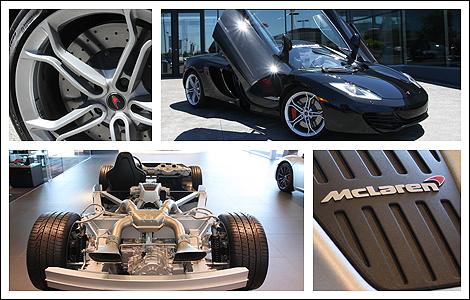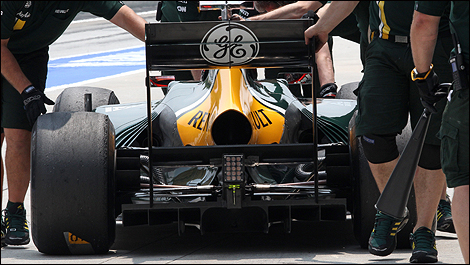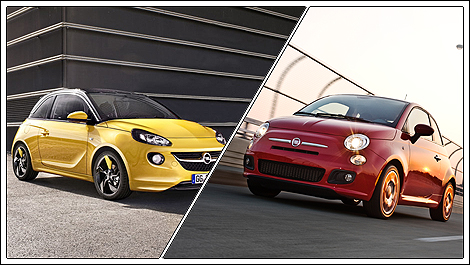Honda Canada claims that the fourth-generation
Honda CR-V for 2012 is all new and it just happens to look similar to the third-generation Honda CR-V it replaces.
I suspect that by keeping the hard body build points the same and changing everything else, Honda was able to keep an economy of scale going so that the MSRP for 2012 would be lower than 2011 for a comparably equipped vehicle. Controlling the price is certainly beneficial when competitors such as the
Toyota RAV4, the
Hyundai Tucson and the Subaru Forester have all followed the same strategy.
Exterior and interior
The outside has probably been changed the least. Unless you are an aficionado or have the new and the old parked side by side, you are not going to really see the differences.
Probably the most noticeable change is in the decrease in width of the crease in the side panels. Changes to front and rear facia are most likely to be overlooked simply because there isn't a large enough difference to stand out.
Inside is a different story. From the second I opened the door, I could see that the interior had been upgraded. Leather seating materials felt better and the front seat was more comfortable than in the past. When I moved to the back seat, the seat cushion and the seatback come together better so that I didn't feel as if there was a gap in support at my lower spine.
 |
| Probably the most noticeable change is in the decrease in width of the crease in the side panels. (Photo: Sébastien D'Amour) |
Driving
I can still get the 10-way power assisted driver's seat into a comfortable position in a few seconds. In fact, the only gripe our family had with the Honda CR-V was that our $35,090 Touring trim level was, as my side seat cruise control put it, “touring for one”; the passenger seat does not offer the same level of adjustment that the driver's seat does, and over long “touring” distances this can make a considerable difference in comfort.
The solution was easy: she drove and I got to fidget about in the seat! I have no idea what a 10-way passenger seat would cost, but even as an option it would be worth it.
Another aspect of touring is interior noise. Honda has put quite a bit of effort into making the interior a bit quieter. When you stop and think about the size of empty space behind the front seat and that it can often act as an echo chamber, you can see what Honda is up against.
Strategic use of sound-deadening material, different carpeting and different interior materials all mean that sound absorption is better than in previous generations. One of the ways we amused ourselves while driving was to pick up the different sounds made by the different pavements used on highways (some drives are REALLY boring). They were never very loud, but were always distinctive.
 |
| I can still get the 10-way power assisted driver's seat into a comfortable position in a few seconds. (Photo: Sébastien D'Amour) |
Engine and transmission
Power for all Honda CR-Vs comes from a 2.4L inline four that puts out 185 hp and 163 lb-ft of torque on regular unleaded fuel. At first, this engine seemed a bit underpowered when mated with the 5-speed automatic, which is the only transmission used in the Honda CR-V.
Driving this combination takes a bit of getting used to; I had to learn where torque peaked, where the part throttle kick-down point was and how many gears the transmission would drop when I put it down to the floor to get passing gear. Once I got those variables under control, the Honda CR-V took on a new personality.
 |
| Power for all Honda CR-Vs comes from a 2.4L inline four that puts out 185 hp and 163 lb-ft of torque on regular unleaded fuel. (Photo: Sébastien D'Amour) |
Handling
Since AWD is standard in the Touring model, I had an extra variable to put into the handling mix. The Honda CR-V did well for a small sized SUV when it came to cornering and could hold its own when accelerating out. It also drove nicely in traffic and responded equally well to puttering about (the i-VTEC motor does a great job).
With all this cornering and puttering about on our streets, the Honda CR-V has to have a pretty good suspension under it. Honda has recalibrated the suspension and ride quality when pushed has improved noticeably. That translates into better control at low speeds where you never think of it.
Getting in and out of parking spaces is easy; excellent visibility from the driver's seat and proper use of the large mirrors means you can change lanes, anticipate other driver's moves and generally have an easier time carving through traffic. Think of it as relaxed aggressive driving.
 |
| Since AWD is standard in the Touring model, I had an extra variable to put into the handling mix. (Photo: Sébastien D'Amour) |
Conclusion
Priced from $25,990, the Honda CR-V is available in four different trim levels, two of which offer FWD or AWD. The EX-L and Touring come only with AWD. Touring is the only trim level to have a navigation system as part of the standard equipment package.
Long drive or short, touring or toodling about, put the Honda CR-V in its various trim levels on your must-drive list.
 The latest auto news, reviews, prices, product and vehicle releases.
The latest auto news, reviews, prices, product and vehicle releases. 


















